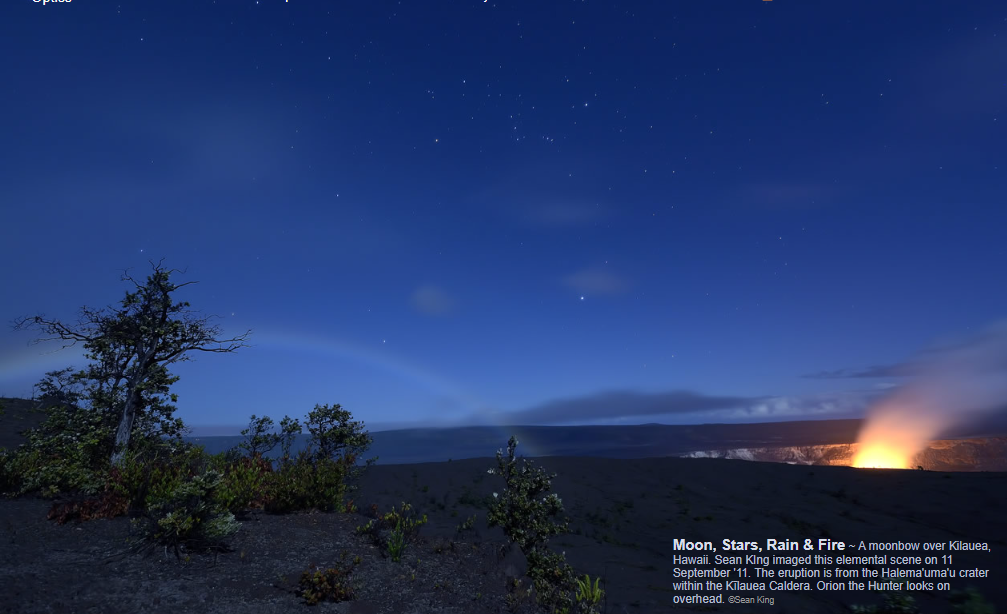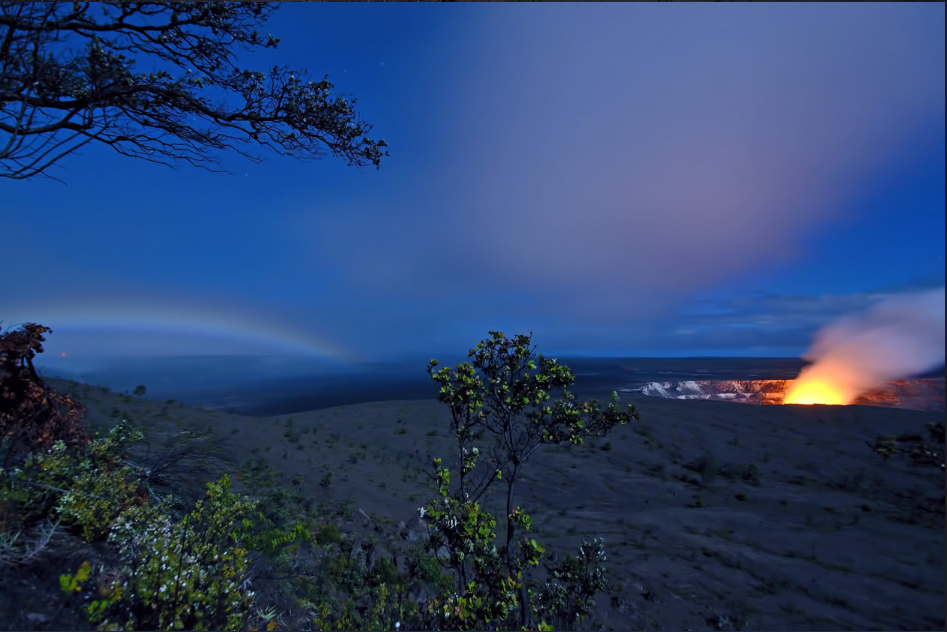OPOD - Pollen Corona
OPOD - Pollen Corona: A Phenomenon of Nature's Artistry
Have you ever marveled at the intricate patterns and colors that nature can create? One such captivating display is the pollen corona, a mesmerizing atmospheric optical phenomenon that occurs when light interacts with pollen particles suspended in the air. While not as well-known as rainbows or halos, the pollen corona is a true testament to the beauty and complexity of our natural world.
What is a Pollen Corona?
A pollen corona is formed when sunlight or moonlight passes through a cloud of pollen particles and undergoes diffraction, causing the light to scatter and create a stunning circular pattern of colors. This phenomenon is similar to the more commonly observed halo effect, where light is refracted by ice crystals in the atmosphere. However, the pollen corona is distinct in its formation and appearance.
The Perfect Conditions for a Pollen Corona
To witness a pollen corona in all its glory, specific conditions must align harmoniously. Here are the key elements required for this phenomenon to occur:
-
Abundant Pollen: A significant concentration of pollen particles must be present in the air. This often happens during the peak of the pollen season when plants release large quantities of pollen grains into the environment.
-
Sunlight or Moonlight: The corona can be observed during the day when sunlight passes through the pollen cloud or at night when moonlight illuminates the particles. Both scenarios create their own unique displays, with sunlight producing vibrant colors and moonlight casting an ethereal glow.
-
Clear Skies: The sky must be relatively clear to allow unobstructed passage of light through the pollen cloud. This means that rainy or heavily cloudy days are less conducive to witnessing this phenomenon.
-
Proper Angle: For a pollen corona to form, the light source (sun or moon) should be at a specific angle relative to the observer. This angle is typically less than 40 degrees above the horizon, which adds an extra layer of rarity to the already elusive pollen corona.
Where to Seek the Pollen Corona
Just like with rainbows, certain locations are more likely to provide ideal conditions for observing a pollen corona. Here are a few places known for their frequent pollen corona sightings:
-
Hawaii: The islands of Hawaii offer a rich environment for pollen corona enthusiasts. With abundant flora and favorable weather conditions, Hawaii provides a picturesque backdrop for witnessing this natural spectacle.
-
Ireland: Known for its lush green landscapes, Ireland is another prime location for pollen corona sightings. The combination of frequent rainfall and vibrant plant life makes it an ideal spot for nature enthusiasts and photographers alike.
-
Western Scotland: With its rugged coastline and wild terrain, Western Scotland is a haven for those seeking the pollen corona. Its remote and untamed beauty provides a perfect setting for capturing this fleeting atmospheric phenomenon.
Capturing the Beauty of the Pollen Corona
Photographing a pollen corona can be a challenging endeavor due to its elusive nature and the delicate balance of conditions required. However, with the right equipment and a keen eye, capturing this stunning display is possible. Here are a few tips for photographing a pollen corona:
-
Use a Zoom Lens: To capture the intricate details of the pollen corona, a zoom lens can help you get closer to the phenomenon without disturbing its delicate structure.
-
Adjust Exposure Settings: Experiment with different exposure settings to capture the vibrant colors and intricate patterns of the corona. Bracketing your shots can also help ensure you capture the full range of colors and details.
-
Consider Timing: Timing is crucial when photographing a pollen corona. Plan your shoot around the optimal angle of the light source (sun or moon) and be prepared to wait for the right moment when all the elements align perfectly.
-
Focus on Composition: Look for interesting foreground elements to enhance the composition of your photograph. This could be a tree branch, a field of flowers, or any other element that adds depth and visual interest to your image.
The Artistry of Nature Unveiled
The pollen corona is not only a scientific marvel but also a testament to the artistry of nature. Its intricate patterns and vibrant colors remind us of the beauty that can be found in even the smallest particles suspended in the air. Whether you have the opportunity to witness a pollen corona firsthand or admire it through photographs, take a moment to appreciate the wonders of our natural world and the awe-inspiring displays it has to offer.

Moon, Stars, Rain & Fire ~ A moonbow over Kilauea, Hawaii. Sean KIng imaged this elemental scene on 11 September '11. The eruption is from the Halema'uma'u crater within the Kīlauea Caldera. Orion the Hunter looks on overhead. ©Sean King

Moonbows are rare and therefore best sought in those places most frequented by ordinary sun powered rainbows. They need plentiful showers with sparkling clear skies between their clouds to let through sun or moonlight. Hawaii, Ireland and Western Scotland are good.
Moonbows are visible less often than solar bows because a combination of a dark sky and a bright moon less than 40 degrees high is needed. A moon near full is best but not essential. The ‘Moonbow Challenge’ currently stands at a bow caught only 4 days after a new Moon.
Sean’s bow was generated by a nearly full moon sinking low in the west. The rain drops were small as evidenced by the middle image where the bow is broad and tending towards a fogbow.

Note: this article has been automatically converted from the old site and may not appear as intended. You can find the original article here.
Reference Atmospheric Optics
If you use any of the definitions, information, or data presented on Atmospheric Optics, please copy the link or reference below to properly credit us as the reference source. Thank you!
-
<a href="https://atoptics.co.uk/blog/opod-pollen-corona/">OPOD - Pollen Corona</a>
-
"OPOD - Pollen Corona". Atmospheric Optics. Accessed on November 26, 2024. https://atoptics.co.uk/blog/opod-pollen-corona/.
-
"OPOD - Pollen Corona". Atmospheric Optics, https://atoptics.co.uk/blog/opod-pollen-corona/. Accessed 26 November, 2024
-
OPOD - Pollen Corona. Atmospheric Optics. Retrieved from https://atoptics.co.uk/blog/opod-pollen-corona/.